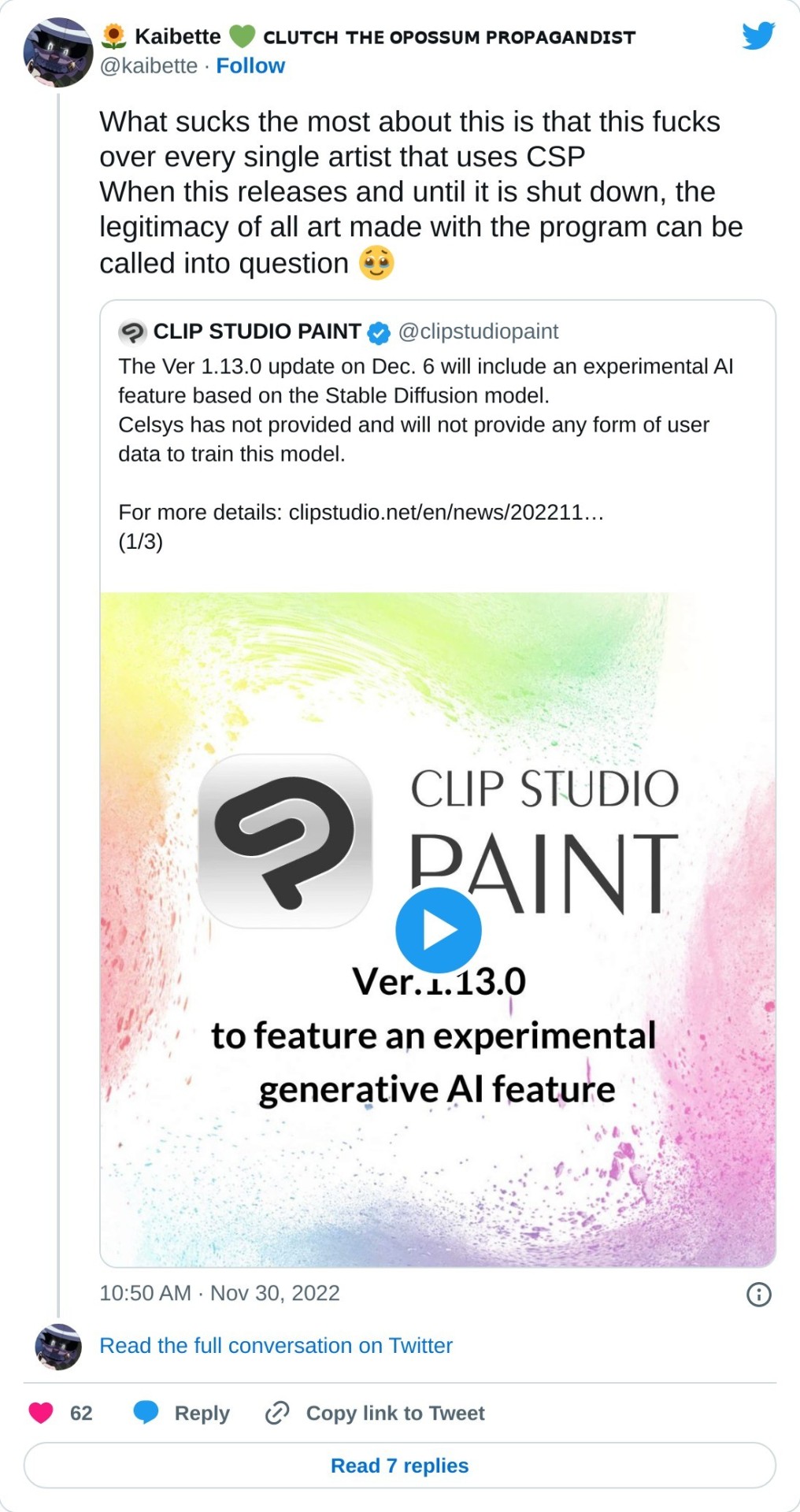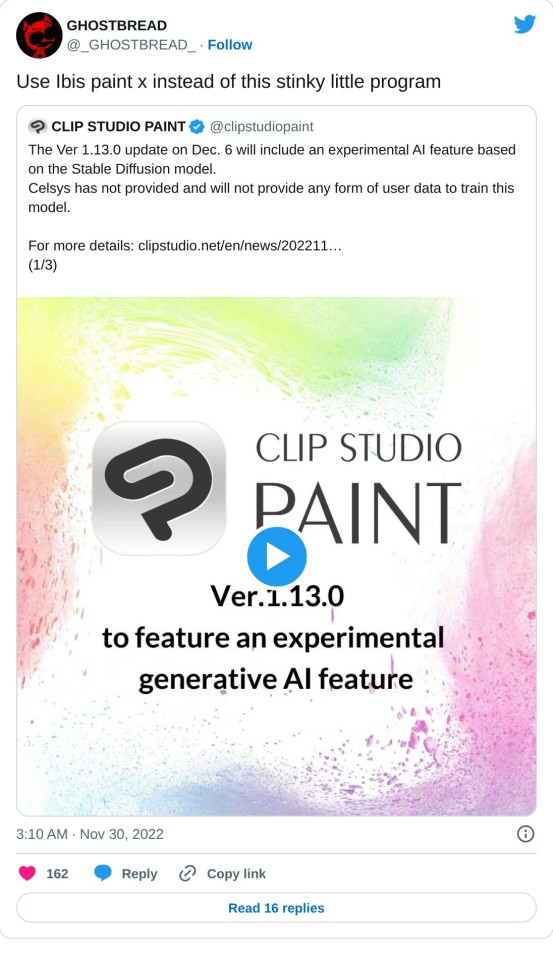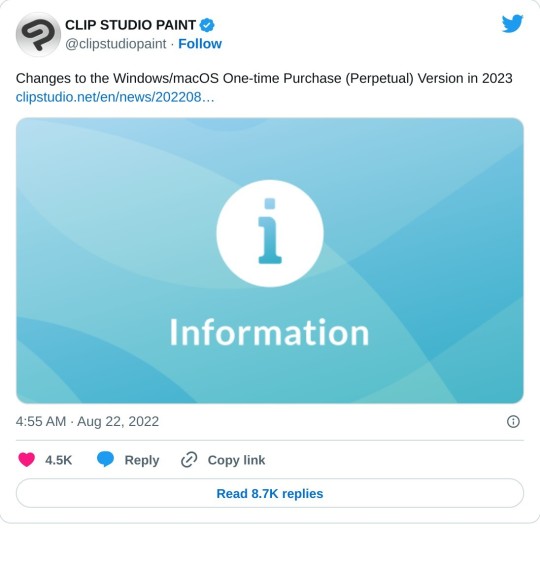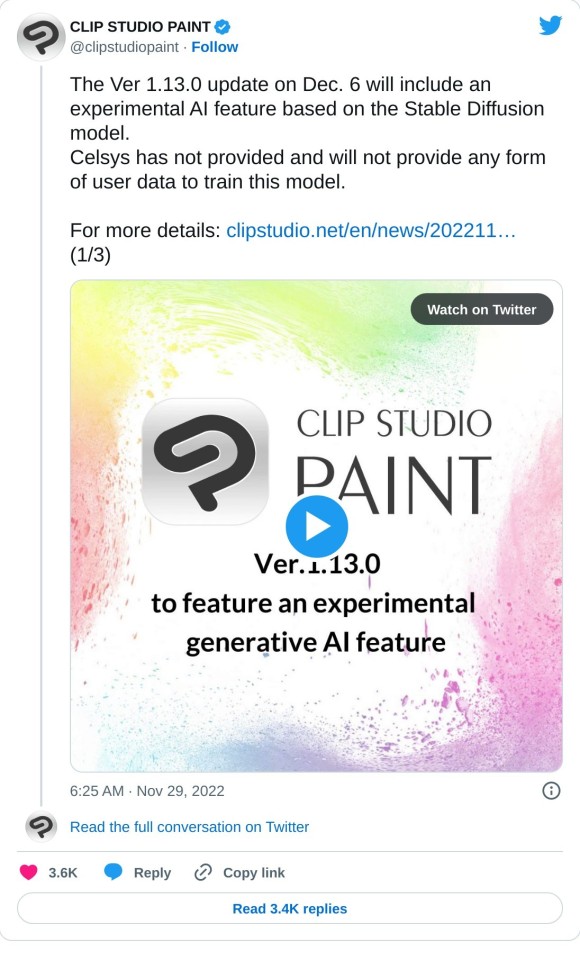#csp online application
Explore tagged Tumblr posts
Text
The Process to Apply for CSP Registration Online
The Common Service Centers Registration commonly referred to as the CSP registration, is the process of enrolling with the CSP program to become a CSP operator. CSP operators are individuals who are authorized to offer various banking services to citizens through the CSP centers. The registration process is an essential step toward applying for a CSP provider. Here's a step-by-step guide to the process of Apply for CSP Registration: Eligibility: To be eligible to apply for CSP bank registration, you must meet the following criteria: • Age: 18 years and above • Nationality: Indian Citizen • Residence: Permanent resident of the area where you want to open the CSP center • Education: Minimum 8th standard pass • A space with necessary equipment, such as an internet connection The process to Apply for CSP Bank Registration: Contact the bank: Get in touch with the bank you wish to open the CSP center with and ask for the application form. For example, if you wish to offer SBI Kiosk Banking services, contact SBI bank directly or apply through the SBI Kiosk Banking service provider to apply on your behalf.
Fill out the application form: Fill out the form with all the required details and attach all the necessary documents. Submit the form: Submit the form along with all the required documents to the bank. Verification process: The bank will verify the details provided by you, which may take up to 15 days. Approval: If everything is in order, the bank will approve your SBI Kiosk Banking application and issue you a registration certificate. Training: Once the registration is approved, the bank will provide you with the necessary training. Start operating: Once the training is complete, you can start operating as a CSP center and provide banking services to your customers. Following the above steps, it is easy to Apply For CSP Registration and get involved in strengthening financial inclusion in the country. Note that the process and eligibility criteria may vary from bank to bank. It is advisable to check with the bank you wish to apply to or the CSP service provider for the most updated information.
Blog Source: https://bankmitraregistration.wordpress.com/2023/04/05/the-process-to-apply-for-csp-registration-online
#CSP BC Apply#All Bank CSP#SBI CSP Apply#Bank Mitra BC Apply#Bank Mitra CSP#Online CSP Provider#CSP Application
0 notes
Text
Apply for digital india CSP
If you're looking to apply for a Digital CSP, then NICT CSP is a great place to start. NICT CSP provides an easy and convenient way for individuals to register as a Digital CSP and start offering a range of banking and financial services to their customers.

#Nict CSP BC#Nict CSP Online#Nict CSP Apply#All Bank CSP#Bank Mitra CSP#CSP Apply#Bank CSP Apply#Apply For CSP#CSP Application#SBI Kiosk Banking
0 notes
Text
How PNB CSP Registration Helps you Provide Financial Services to your Community
PNB (Punjab National Bank) is one of India's largest public sector banks with an extensive branch network across the country. As part of the financial inclusion program, PNB launched a Customer Service Point (CSP) program to provide banking services to the non-banking and banking sector in rural and remote communities.
PNB CSP Registration is a great opportunity for individuals and business people to become a part of the banking system and provide financial services to society. As a CSP, you can act like a small bank and provide services such as account opening, cash deposits, cash withdrawals, money transfers, and other basic banking services.
PNB CSP aims to reach out to the domestic unbanked and underbanked and provide convenient banking services at their doorsteps. By becoming a PNB CSP, you can bridge the gap between banks and individuals and play a key role in the country's financial inclusion.
How to apply for PNB CSP registration and what are its benefits
You must meet certain eligibility criteria in order to apply for PNB CSP registration that, includes the following:
• Over 18 years of age, • Valid identification • A suitable workspace and equipment
PNB CSP can apply online by visiting the official website of PNB or visiting the nearest PNB branch. You can also rely on a repeatable Bank CSP Provider if you want to apply for PNB CSP. Once your application is accepted, you will be required to attend a training program conducted by PNB to understand the banking systems and services you offer as a CSP.
As a PNB CSP, you earn a commission on every transaction you make on behalf of your bank. The commission rates are competitive and depend on the type of service provided. Also, you can earn from providing other financial services to our customers, such as insurance, mutual funds, and other investment products.
By becoming a CSP, you can benefit from PNB's brand value and trust and offer your customers a wide range of banking services. You can also build a loyal customer base by providing quality service and gain a reputation as a reliable and trustworthy Bank CSP Provider.
In conclusion, by becoming a PNB CSP, you can play an important role in the country's financial inclusion and have a stable source of income. If you meet the eligibility criteria and have the necessary infrastructure and resources, consider applying for the PNB CSP Registration and become a part of the country's banking revolution.
Blog Source: https://allbankcsp.wordpress.com/2023/03/13/how-pnb-csp-registration-helps-you-provide-financial-services-to-your-community/
#Apply For CSP#CSP Application#Bank CSP Registration#CSP Online Apply#CSP Registration#Bank Mitra Registration#Digital CSP Registration#CSP Provider
0 notes
Text
Why Should Work as a Bank CSP for a Nationalized Bank?
Working as a Bank CSP for a nationalized bank in India, you are playing multiple roles in developing your parent bank. With your professional and dedicated services, you will not only be capable of improving your life quality but also the reputation of your parent bank. This is for the reason that you can commit yourself to earn a decent monthly income, at the same time, you are promoting a range of financial products of your parent bank.
Additionally, as a Bank CSP of your parent bank, you are not only allowing your customers to avail of easy-banking facilities. You will also be capable of providing your customers with many digital payment options. As an AePS service provider through your Digital CSP Registration, you will be facilitating your customers to access Aadhaar Micro ATM facilities, trouble-free money withdrawals, as well as other payment facilities easily at your retail outlet itself. You can offer these services available at your existing Kirana shop itself. This is for the reason that all nationalized banks in the country allow their Bank CSP providers to run their CSP outlets at their existing retail shops themselves. Opening an SBI Kiosk Banking outlet in your area will aid you considerably in getting a bounty of benefits. The major benefit is that you will be capable of giving the citizens in your neighborhood many additional benefits. You can help them greatly in getting all the financial benefits of the State Bank of India at their nearest place, where you operate your CSP outlet. Additionally, you will also be earning high commissions on each of the transactions that you allow your SBI customers to perform. When you open an SBI Kiosk Banking outlet, it can make an excellent deal for you, and your customers, as well as for the State Bank of India. You will become an authorized AePs or Aadhaar Enabled Payment System Service Provider of SBI. If you would like to become an SBI AePS agent, the process is extremely simple and easy. You can just download the AePS application from the official website of the bank and register yourself as a merchant. You can fill in the registration form with details as specified by the bank. Once the registration process is completed, you can work as an AePS agent for the State Bank of India. Blog Source: https://applyforcspbank.finance.blog/2022/12/13/why-should-work-as-a-bank-csp-for-a-nationalized-bank/
#All Bank CSP#Bank CSP#CSP Provider#CSP Application#Apply For CSP#CSP Online Apply#Bank Mitra Registration
0 notes
Text
why do so many art programs and even like color customizing applications online go out of their way to hide hex code colors like how does that make sense. it's so much more convenient to have it with everything else. why does csp have RGB, HSV, and CMYK sliders for your workspace but no little tab that says the hex code of the color you're picking it's so ANNOYING
#diary#paint tool sai does this too but i forgive her#i've been so spoiled with aseprite's color system
6 notes
·
View notes
Note
Hello and congratulations on so many followers! Your art is always so interesting to look at, you deserve them :D
And as for the ask, I noticed that you use a lot of cool effects and colors in your works. What applications do you use, if any? For editing, making the gifs, or even for drawing? Sorry if you've answered this somewhere else, Im just curious (o^◡^o)
Oh! No problem at all! I have not actually been asked this yet and I am happy to answer! As for my process, it's a mix of differing things. For one, I use Clip Studio Paint, occasionally drawing in MS Paint and bringing it to CSP to edit. Or, I just use MS Paint in general though, honestly, though I call it MS Paint, it's actually just Paint on my computer. It's got layers and everything which is pretty cool so calling it MS Paint is a stretch. It was MS Paint at some point though. My computer updated a while back which is why it's all different. Here's what it looks like btw. Opened some layers up for demonstration.

I mostly do a lot with multiply layers and just mess around with them, sometimes going to the Edit menu in CSP, Tonal Correction, and then Color Balance. I usually do that after I'm done with a piece and I wanna give some harmony. Also, before I forget, I use CSP for my gifs. Since I have Pro I think and not Ex though, I cannot make BIG animations. I am limited with gifs. Another thing I will mention is that I got CSP via a disk online if that helps! I do not remember the price as I did not buy it myself. Got CSP when I was a kid still like... dang. Think it was sometime in 2016 though I genuinely don't remember. As for actual art advice, one big trick I've been using is having a light opacity layer of grain over my pieces which can help the colors not be too bright or just add some nice texture. I also just try and use textured brushes sometimes both for line art and shading. I just go to Filter on the top right here, Render -> Perlin Noise, move it all the way to the left


Then, I lower the opacity of it to my choosing, usually to 15% or 25%. It all depends on the exact vibe I'm going for it and I try not to give myself TOO set of rules for certain things

Also, since I might as well, I have two-ish ways of shading. First one is just picking a color in the color wheel, coloring with that, and having it be on a multiply layer, sometimes in a light opacity to ensure it's not too bright. A newer way I shade now is to use the base color, make it a bit darker, going a bit in a diagonal way on the color wheel, and then coloring like that. This shall be the example in which I will demonstrate by shading Byakuya's hair over here. Also, I don't usually isolate the shading subject in question with the little magic wand tool. I sometimes do it just for skin to ensure I'm getting the red undertones of the skin in that specific area only

Here's the color wheel before and after


I like to try and move the wheel a bit to the left to add some variety For the pen, I like to just use the standard pencil brush though I also mix it up a bit now and again

And here it is roughly shaded to the right side.

Another thing of note is that, as of recently, been playing around with adding these TV lines.

Just kinda went and typed "TV lines" in a search engine, put it into CSP, lower the opacity, and play around with blending modes. Here's an example I did for a more recent piece.

Hope this was useful. Prob forgot a few things but I tried to make it understandable. Plus, I'm still learning too on the things I do with my art. It's always good to innovate now and again :D But yeah. Hope this made sense. Kinda went a bit all over the place
4 notes
·
View notes
Text
Part 4: Community Response
This is part of a school assignment on ethical dilemmas in business. It is for educational purposes only.
part 1 | part 2 | part 3 | part 5
The community response to both of Clip Studio Paint's announcements was unprecedented, exiting the social media sphere and entering artist and business spaces alike for debate.
Version 2.0 Pricing Announcement
The most common reaction to the Version 2.0 announcement was actually confusion. A lot of the software's customer base consists of casual users who make art as a hobby, and this includes young teenagers. Many of these users did not understand the complex new pricing model, how (or if) it would affect their ability to use the application, or what was even changing to begin with. Diagrams began popping up in online circles attempting to explain what was going to happen, especially since the chart on CSP's website was unclear in terms of what artists should do about the updates.

As explained in a Gizmodo article released the same day as the initial announcement,
"Existing users of version 1 can purchase a perpetual license for version 2, but they won’t have access to feature updates from 2.1 and onward. Developers will also discontinue support for the perpetual license users when they eventually release version 4. Those looking to keep receiving new features will have to buy a one-year update pass, but the company has not revealed what price points we could see from any of these options."
This model, once deciphered, caused considerable frustration among users, especially since the Version 2.0 perpetual/one-time purchase license for Clip Studio Paint EX (the same one that would be denied access to feature updates after Version 2.1) would cost over $200.

As confusion turned to anger mixed with genuine hurt at what was perceived as blatant disrespect from an otherwise reliable software, the response became overwhelming. Artists took to Twitter to vent their frustrations (in many instances to somewhat humorous effect), with this screencap from Megamind being a popular response comparing Clip Studio Paint's new pricing model to that of the Adobe suite:

Further responses take much the same tone, regardless of location. One user even posted a compilation of responses in different languages with the caption "I love how everyone united."




Artificial Intelligence
An article from The Verge delves a little deeper into the source of the AI controversy: "the Japanese art community has been especially hostile toward the concept of autonomous image generation—and Celsys is a Japanese company." In fact, the debate has been so intense that many artist spaces have banned the use of AI in its entirety, according to a blog post by Andy Baio. "Left unchecked, it’s not hard to imagine AI art crowding out illustrations that took days or weeks for someone to make," Baio said.
In September of 2022, Fur Affinity, an art site for fans of anthropomorphized drawings of animals known as "furries," banned AI-generated art on the grounds that it "lacked artistic merit." Also in late 2022, art and animation portal Newgrounds updated its guidelines for much the same reason: "We want to keep the focus on art made by people and not have the Art Portal flooded with computer-generated art."
While the ethics of AI generated art remain ambiguous, this marks a recent trend, in artists' spaces, at least, of banning AI art altogether. "We at Animé Los Angeles do not condone or accept an form of AI-generated art piece being used within our promotional materials nor being sold in our Exhibit Hall or Artist Alley," reads a statement by Animé Los Angeles. Anime NYC, another huge anime convention, has taken the same route, according to ARTnews.
Responses to Clip Studio Paint's announcement of the AI feature ranged from anger to disappointment (to triumph, largely from NFT shill accounts). As one user pointed out on Twitter, "When this releases and until it is shut down, the legitimacy of all art made with the program can be called into question." "Use Ibis paint x instead of this stinky little program," was a suggestion offered by another user. Others begged CSP to do better, pointing out the potential for future lawsuits and imploring the company to "listen to the community" (source).
The issue of legality is an important one, especially since generative AI art is such a new technology. One AI user even discovered photos from private personal medical records in an AI data training set. This alongside many instances of intellectual property theft in AI begs the question of where the line is drawn, and when AI data training becomes illegal or even dangerous.
Personal Thoughts
In the time between Clip Studio's announcement of these features and its amendments, many users suggested retracting financial support or moving on to other applications entirely. Free or "freemium" platforms such as Medibang Paint Pro, Ibis Paint X, and Krita were listed as options. This is, in my opinion, the best way to make a company listen to its users on ethical concerns such as these. The loss of financial support, and, more importantly, the possibility to regain that support, is a key motivator.
Others suggested pirating the software, which is, of course, another ethical matter entirely. In my opinion, it has the potential to be less effective in the long run, since many people don't know how to pirate, don't know how to pirate safely, or will decide it's more trouble than it is worth. Companies can also instate anti-piracy methods, especially when piracy websites are publicized online. Free and freemium alternatives are easily accessible, legal, and stands on solid ethical ground.
As an artist myself, I must admit a level of personal bias with regards to the AI issue. I am of the belief that AI generated art, when trained on non-public-domain works (that is, works protected by Copyright), is detrimental from a moral, legal, and ethical standpoint. Copyright as a whole was introduced to protect the artist's right to create, and I believe that using protected works to train and profit off of AI art spits in the face of why intellectual property exists. That said, I do believe that public domain works, royalty free images, and art that is used with consent and compensation can be used to train AI art ethically. The issue is that this is not how AI art is being used, and there are very few ways to regulate it.
For these reasons, I personally believe that the decision being made on many artists' platforms and in many artists' spaces to ban AI art altogether is the best course of action. Until these images can be regulated to where they are consistently created in a morally and ethically sound manner, I do not think it is safe or even advisable to host these images or allow them to be used for profit, especially if future legal issues arise.
Sources





3 notes
·
View notes
Text
Hosiery Market
Hosiery Market Report Scope and Research Methodology
The report provides a comprehensive understanding of the Hosiery Market market's dynamics and structure, analyzing various segments and projecting market size. To gather insights, it utilizes a blend of primary and secondary research methodologies.
Request for a sample of this research report : https://straitsresearch.com/report/hosiery-market/request-sample
The global Hosiery Market Size was valued at USD 41.2 billion in 2022 and is projected to reach from 0 billion in 2024 to USD 63.3 billion by 2030, growing at a CAGR of 4.9% during the forecast period.
It examines every aspect of the Application, focusing on key players such as market leaders, followers, and new entrants. The report includes PORTER and PESTEL analyses, assessing the potential effects of microeconomic factors on the market. Statistical and analytical tools are employed to analyze data, identify trends, and estimate both market size and growth potential. Additionally, competitive analysis is conducted to understand the market share, product offerings, and strategies of key players. Both internal and external factors likely to impact the business, either positively or negatively, are evaluated, offering decision-makers a clear future perspective on the Application.
Buy Now Full Research Report : https://straitsresearch.com/buy-now/hosiery-market
Hosiery Market Segmentation
By Product Type
Socks
Subtype
Athletic socks
Dress socks
Casual socks
Compression socks
Specialty socks
Stockings
Subtype
Pantyhose
Thigh-high stockings
Knee-high stockings
Tights
Subtype
Opaque tights
Sheer tights
Patterned tights
Others
Leggings
Subtype
Athletic leggings
Fashion leggings
By Gender
Women
Men
By Distribution Channel
Retail Stores
Online Retail
Hosiery Market Key Players
Hanesbrands Inc.
LVMH
Gildan Activewear Inc.
Golden Lady Company SpA
Adidas AG
CSP International Fashion Group S.p.A.
Renfro Corporation
2XU Pty Ltd.
Spanx LLC
Carolina Hosiery Inc.
Hosiery Market Regional Insights
A regional analysis is performed to evaluate the status of the Hosiery Market across countries in North America, Europe, Asia Pacific, Latin America, the Middle East, and Africa. The report offers an in-depth examination of factors such as market size, growth rate, and import-export activities within these regions. By segmenting the Hosiery Market market into these broad regions, the analysis provides a detailed understanding of the market landscape and dynamics specific to each geographical area.
For media inquiries, please contact:
U.S. Contact: +1 646 905 0080
U.K. Contact: +44 203 695 0070
Browse Related Reports :
0 notes
Text
Easily check the status of your PAN card using your mobile number with our API. Get real-time updates on PAN card application, verification, and delivery status. Fast, secure, and reliable.
#Free Pan Card Services Api#Pan Card Services Api#Pan Card Online Apply Api#Online Pan Card Application Api#Pan Card Status Check by Mobile Number Api
0 notes
Text
Essential Factors to Consider When Selecting a Cloud Service Provider
In the rapidly evolving tech landscape, choosing the right cloud service provider (CSP) is vital for any organization aiming to leverage cloud computing effectively. With numerous providers available, it’s important to dissect several critical aspects to ensure that your selected provider meets your operational and strategic needs.

If you want to advance your career at the Cloud Computing Course in Coimbatore, you need to take a systematic approach and join up for a course that best suits your interests and will greatly expand your learning path.
Below are the essential factors to guide your decision-making process.
1. Range of Services Available
Cloud providers vary significantly in their offerings, including options such as Infrastructure as a Service (IaaS), Platform as a Service (PaaS), and Software as a Service (SaaS). Identify your specific requirements and ensure the provider can deliver the necessary services to support your business initiatives, whether that’s scalable computing power, managed services, or specialized tools.
2. Cost Structure and Transparency
Understanding the pricing model of a cloud service is crucial, as it can significantly impact your budget. Look for a clear pricing structure that outlines how costs are determined, including pay-as-you-go options and any potential additional charges for data transfer or storage. This foresight can help you avoid unexpected expenses down the line.
3. Performance Metrics and Uptime
Performance is a key consideration when evaluating cloud providers. Investigate their track record for uptime and reliability. A solid SLA (Service Level Agreement) that guarantees high availability—ideally 99.9% or more—is essential. Additionally, consider latency and how the provider’s data center locations might affect your service performance.
4. Security Measures and Compliance Standards
Security is paramount when it comes to cloud services. Assess the provider's security protocols, such as data encryption, access controls, and incident response strategies. Furthermore, ensure that they comply with relevant industry regulations and standards (e.g., GDPR, HIPAA) to safeguard your sensitive information.
5. Ability to Scale and Adapt
As your business grows, your cloud needs may change. It’s crucial to select a provider that offers scalability, allowing you to adjust resources easily in response to evolving demands. This flexibility can help maintain efficiency while managing costs effectively.

For those looking to excel in Cloud computing, Cloud Computing Online Course is highly suggested. Look for classes that align with your preferred programming language and learning approach.
6. Quality of Customer Support
Reliable customer support can greatly enhance your experience with a cloud provider. Investigate the support options available—whether through chat, phone, or email—and gauge their responsiveness. Reading customer reviews can provide insight into the quality and availability of support services.
7. Integration Capabilities
Evaluate how well the cloud services will integrate with your existing infrastructure and applications. A provider that supports a wide range of technologies can facilitate smoother transitions and enhance overall productivity within your organization.
8. Avoiding Vendor Lock-In
Vendor lock-in can present substantial challenges if you decide to switch providers in the future. Assess the risks and choose a provider that emphasizes open standards and interoperability to minimize potential migration hurdles.
9. Global Presence and Data Sovereignty
For businesses operating on a global scale, consider the geographical reach of the cloud provider. Data residency requirements may dictate where your data must be stored, so it’s essential to ensure that your chosen provider has data centers located in the necessary regions.
10. User Interface and Management Tools
A provider’s user interface and management tools play a critical role in your overall experience. Look for intuitive dashboards and comprehensive monitoring solutions that simplify management tasks and help optimize resource utilization.
Conclusion
Selecting the right cloud service provider is a fundamental decision that can influence your organization’s agility, security, and operational efficiency. By carefully evaluating these essential factors—service offerings, cost, performance, security, scalability, support, integration, vendor lock-in, global presence, and user experience—you can make a well-informed choice that aligns with your business objectives. Taking the time to thoroughly research and compare your options will set the stage for a successful cloud adoption journey
0 notes
Text
From Telco to Techco: Why the Shift is Essential For Telecommunications Companies?

The telecommunications industry is undergoing a period of rapid transformation, driven by the rise of digital technologies and changing customer expectations. In recent years, one of the most significant trends has been the shift of Communication Service Providers (CSPs) from traditional telcos (telecommunication companies) to techcos (technology companies). But what does this shift actually mean, and why is it so crucial for telecom companies today?
What is a Techco? Historically, telcos have focused on providing basic connectivity services, such as voice, data, and video communication. Their role was centered around facilitating communication, often as utility providers. However, a techco goes beyond these foundational offerings by delivering an integrated ecosystem of digital services that span beyond connectivity. Techcos create additional value for customers by integrating digital services such as cloud computing, artificial intelligence (AI), Internet of Things (IoT), online payments, media, and even advertising. This allows them to provide more comprehensive, end-to-end solutions that help businesses and consumers thrive in today’s digital-first world.
Why Telcos Need to Evolve ? The market for basic connectivity services like phone lines and internet access is nearing saturation. With increasing competition from over-the-top (OTT) platforms such as WhatsApp, Netflix, and Zoom, telcos must look beyond their traditional services to remain competitive and sustainable. In the techco world, the ability to innovate quickly, identify and meet customer needs, and move with agility is key. By embracing a techco model, telecom companies can expand their service portfolios and offer a broader array of digital products that generate new revenue streams and strengthen customer loyalty.
Key Drivers of the Telco-to-Techco Transition Several major factors are fueling the shift from telco to techco:
1. Shifting Customer Expectations: Customers now expect more than just connectivity. They demand seamless, integrated digital experiences that go beyond data services. Techcos can meet these expectations by providing enhanced solutions, such as AI-powered customer service, IoT-enabled smart homes, and cloud-based enterprise tools.
2. New Revenue Streams: The rise of digital services presents telecom companies with the opportunity to diversify their offerings and enter new markets. With OTT services eating into traditional revenue, the move toward techco enables telecoms to offer cutting-edge services like digital advertising, media streaming, and cloud computing.
3. 5G and IoT Acceleration: The rollout of 5G networks is a gamechanger for telcos. 5G not only brings faster connectivity but also supports advanced technologies like IoT, AI, and autonomous vehicles. By transitioning to a techco model, telecom companies can unlock new business opportunities in areas like smart cities, connected healthcare, and industrial IoT applications.
4. Leveraging Existing Infrastructure: One of the key advantages telcos have in this transformation is their established infrastructure. Telecom companies already possess the networking capabilities needed to deliver next-gen digital services, providing them with a competitive edge in the techco space.
Techco vs. Telco: What’s the Difference? The main distinction between a telco and a techco lies in their service offerings and approach to innovation.
• Telco: Focuses primarily on providing connectivity services, such as voice, data, and video. Telcos traditionally operate as utility providers offering basic communication services.
• Techco: Offers a wider array of digital services that include not only connectivity but also cloud computing, AI, digital media, and IoT. Techcos deliver complete digital ecosystems that enhance customer experiences, helping enterprises and individuals thrive in the digital age.
By adopting a techco model, telecom companies can offer their customers a more holistic, technology-driven service package that goes far beyond basic connectivity. This shift can also result in increased customer loyalty, greater market value, and access to new growth opportunities.
The Role of Solutions Like Trigital Technologies in the Telco-to-Techco Journey The transition from telco to techco presents several challenges, including the need to overhaul legacy systems, adopt new technologies, and integrate digital services seamlessly. However, solutions like Trigital Technologies can make this journey significantly easier and more effective for telecom companies.
Trigital Technologies is the only company in the world that offers a comprehensive solution designed specifically to support telecom companies in their transition from telco to techco. Our product suite includes both NextGeneration Billing Systems (NGBSS) and Operational Support Systems (OSS), which are essential for managing telecom operations efficiently and adapting to the demands of the techco model.
Additionally, our Nipige A SaaS Digital Transformation Platform empowers telecoms to Flexible, pre-built business solutions tailored to any industry Seamless integrations with existing systems Scale globally with our multichannel capabilities. In today’s fast-paced digital world, the key to thriving is adaptability and speed. Whether you’re a startup or an established brand, Nipige offers a customizable platform designed to help businesses scale, innovate, and go live faster than ever before. From healthcare to logistics, ecommerce to hyperlocal markets, we provide end-to-end solutions that empower businesses to launch and grow in weeks, not months.
By partnering with Trigital Technologies, telecom companies gain access to a complete digital transformation platform that integrates next-gen billing systems, OSS, and digital services, positioning them as leaders in the techco space.
Real-World Examples of the Telco-to-Techco Shift Several telecom giants have already begun transitioning toward becoming techcos:
• Vodafone Group: Vodafone is focusing on platforms and partnerships to expand its digital offerings. By integrating 5G, IoT, cloud, and connectivity, the company has transformed from a traditional telco into a techco that provides end-to-end digital solutions.
• AT&T: AT&T's acquisition of Time Warner in 2016 marked a significant step toward becoming a techco. The move enabled AT&T to offer a "mobile-first" entertainment experience, diversifying its services beyond traditional telecom.
• Reliance Jio: Starting as a 4G provider, Reliance Jio has rapidly expanded into cloud computing, data centers, and OTT services. It now serves as a leading techco in India, with a strong portfolio of digital offerings.
Why Transitioning to Techco is Urgent? The telco-to-techco transition is no longer just an option—it’s a strategic imperative. Digital-first telecoms are growing revenues at an average rate of 20%, while traditional telcos are seeing growth rates of only 3%. The faster telecom companies make this shift, the sooner they can unlock new revenue streams and maintain relevance in an increasingly digital world. Moreover, as technologies like 5G, AI, and IoT continue to disrupt industries, telecom companies that remain focused solely on connectivity risk falling behind. By embracing the techco model, telecom companies can position themselves at the forefront of innovation, delivering not just connectivity, but comprehensive digital solutions that meet the demands of modern consumers and businesses.
Conclusion: The Future of Telecom is Techco? The transformation from telco to techco is crucial for any telecom company looking to survive and thrive in today's digital landscape. By embracing digital services and leveraging their existing infrastructure, telecom companies can move beyond traditional connectivity to become essential technology providers in a digital-first world. Trigital Technologies stands ready to support telecom companies on this journey. With our complete BSS and OSS solutions and our Nipige A SaaS Platform, we empower telecoms to make the shift to techco faster and more effectively than ever before. The future of telecommunications lies in becoming a techco. The companies that embrace this shift now will be the ones leading the digital revolution in the years to come.
Join the digital revolution today! Partner with Trigital Technologies and accelerate your transformation from telco to techco with our cutting-edge BSS and OSS solutions. Let's lead the future together—contact us now at www.trigitaltech.com to get started!
0 notes
Link
Bank Mitra CSP can offer these services to customers in their locality and earn a commission for every transaction. Bank Mitra CSP not only provides a source of income for Bank Mitra but also helps in expanding the reach of banking services to the underprivileged sections of society. To know more visit our official website.
#Nict CSP#CSP Application#Bank CSP Apply#Bank Mitra CSP#SBI CSP Apply#Digital CSP Apply#Apply For CSP#Online Nict CSP Apply
0 notes
Text
CSP Online Apply
If you want to apply for CSP online then we can help you to apply for online CSP. CSP Bank Mitra bc is a trusted website for giving CSP online. With less documentation, you can become a bank Mitra. To know more kindly visit our website.
0 notes
Text
Digital Light Processing DLP Projector Market Size, Share, Growth, Trends [2032]
Digital Light Processing DLP Projector Market provides in-depth analysis of the market state of Digital Light Processing DLP Projector manufacturers, including best facts and figures, overview, definition, SWOT analysis, expert opinions, and the most current global developments. The research also calculates market size, price, revenue, cost structure, gross margin, sales, and market share, as well as forecasts and growth rates. The report assists in determining the revenue earned by the selling of this report and technology across different application areas.
Geographically, this report is segmented into several key regions, with sales, revenue, market share and growth Rate of Digital Light Processing DLP Projector in these regions till the forecast period
North America
Middle East and Africa
Asia-Pacific
South America
Europe
Key Attentions of Digital Light Processing DLP Projector Market Report:
The report offers a comprehensive and broad perspective on the global Digital Light Processing DLP Projector Market.
The market statistics represented in different Digital Light Processing DLP Projector segments offers complete industry picture.
Market growth drivers, challenges affecting the development of Digital Light Processing DLP Projector are analyzed in detail.
The report will help in the analysis of major competitive market scenario, market dynamics of Digital Light Processing DLP Projector.
Major stakeholders, key companies Digital Light Processing DLP Projector, investment feasibility and new market entrants study is offered.
Development scope of Digital Light Processing DLP Projector in each market segment is covered in this report. The macro and micro-economic factors affecting the Digital Light Processing DLP Projector Market
Advancement is elaborated in this report. The upstream and downstream components of Digital Light Processing DLP Projector and a comprehensive value chain are explained.
Browse More Details On This Report at @https://www.globalgrowthinsights.com/market-reports/digital-light-processing-dlp-projector-market-100556
Global Growth Insights
Web: https://www.globalgrowthinsights.com
Our Other Reports:
Global Early Phase Clinical Trial Outsourcings MarketMarket Share
Global Paraformaldehyde MarketMarket Growth
Spa Software MarketMarket
Desktop CNC Machines MarketMarket Share
Programmable DC Power Supplies MarketMarket Growth Rate
Dyes and Pigments MarketMarket Forecast
Global Data Labeling Solution And Services MarketMarket Size
Online Betting MarketMarket Growth
Auction House MarketMarket Analysis
Electronic Grade Hydrofluoric Acid MarketMarket Size
Global Security Orchestration Automation and Response (SOAR) MarketMarket Share
Global Usb Portable Battery MarketMarket Growth
Indoor Location By Positioning Systems MarketMarket
Concentrated Solar Power (CSP) MarketMarket Share
Exome Sequencing MarketMarket Growth Rate
Industrial Electric Vehicle MarketMarket Forecast
Global Basketball Equipment MarketMarket Size
Apps for Kids MarketMarket Growth
Connected Street Lights MarketMarket Analysis
Paste PVC Resin MarketMarket Size
Global Privacy Management Software MarketMarket Share
Global Herpes Treatment MarketMarket Growth
T-cell Therapy MarketMarket
General Purpose Polystyrene (GPPS) MarketMarket Share
Water Hardness Removal MarketMarket Growth Rate
Beta Cyfluthrin MarketMarket Forecast
Global Minimally Invasive Surgery Video Columns MarketMarket Size
Computerized Maintenance Management System (CMMS) Software MarketMarket Growth
Distributed Denial-Of-Service (DDoS) MarketMarket Analysis
Bio-Based 1,3-Butanediol MarketMarket Size
Global Civil Engineering Design Software MarketMarket Share
Global Glycerol Monooleate MarketMarket Growth
Travel and Expense Management Software MarketMarket
Ureteroscopy MarketMarket Share
Flexible Graphite Sheet MarketMarket Growth Rate
Blast Suppression Damper Market Market Forecast
Global FRP Prefab Bathroom MarketMarket Size
OLED Coater and Developer MarketMarket Growth
Plant based Hemostat Powder Market Market Analysis
0 notes
Text
Part 1: Overview
This is part of a school assignment on ethical dilemmas in business. It is for educational purposes only.
part 2 | part 3 | part 4 | part 5
Clip Studio Paint is an immensely popular software application used in the creation of digital art, illustrations, and 2D animation. Since being launched in 2012, CSP has garnered a user base of more than 25 million worldwide, partially thanks to its multiple language options including Japanese, Korean, Traditional Chinese, Simplified Chinese, French, Spanish, German, and English.

image from: clipstudio.net
The controversy surrounding this company exists in two parts: firstly, its plans to move to a subscription-based option and, secondly, the introduction of an AI feature.
The Subscription Issue

Previously, Clip Studio Paint offered its software for a one-time purchase of $49.99, making it stand out from subscription-based competitors such as Adobe Photoshop. The company began offering a "PRO" subscription option in 2018, but in August of 2022, CSP posted a statement clarifying that "from 2023 onwards, the current Version 1 (the one-time purchase, perpetual version for Windows/macOS, “Version 1.x” hereafter), offered as a download and physical version will no longer receive feature updates free of charge."
The update was generally received quite poorly.


The controversy stemmed in large part from the fact that CSP had leaned heavily on its one-time purchase feature as a main selling point for its software, and, many users who looked to CSP as a reliable, high-quality software had already invested large amounts of money in the existing subscription and one-time purchase options, only to be told that, in a matter of months, they would no longer be able to update their software without paying more. Consumer and public responses to this controversy will be explored in part 4.
Here, the dilemma faced by Clip Studio Paint is whether to risk losing some of their existing consumer base for the chance to generate higher profits, and, furthermore whether it was even worth it to ruin an otherwise well-maintained relationship with its dedicated consumer base.
AI Controversy

An update posted by Clip Studio Paint in November of 2022 claimed that an approaching update would include "an experimental AI feature based on the Stable Diffusion model." Stable Diffusion, for clarity, is an artificial intelligence software that generates art and photos based on text prompts, launched in 2022. According to a video posted on CSP's Twitter page, the primary intended purpose for this feature would be to generate backgrounds, references, and props for artists' use, which would be especially useful for comic and webtoon creators having to create content on tight schedules.
Here, the primary controversy stemmed from a note at the very bottom of CSP's press release discussing the matter: "We cannot guarantee that images generated by the current model will not infringe on the rights of others." This caused backlash due to the fact that artificial intelligence, particularly the sort used in AI art generators, trains itself on existing images online, and, since AI art as a whole is still in its infancy, there have been rampant issues regarding intellectual property infringement where artists have found their works being used to train AI art generators without credit or consent.
The dilemma faced by CSP here is how ethical the use of artificial intelligence in the generation of art is. The ethics of AI generated art continues to be a hotly debated topic, especially when issues like copyright become more muddled. Many artists are already underpaid and unrecognized, and many cannot afford to pursue legal action when discovering their art has been used to train AI art generators. Meanwhile, the mechanics of AI art generation are still gray, and the argument over whether AI-generated art can be counted as its own "thing" persists.
Sources



4 notes
·
View notes
Text
Electric Rice Cooker Market is Poised for Expansion Key Trends and Market Projections to 2031
Hosiery Market Report Scope and Research Methodology
The report provides a comprehensive understanding of the Hosiery Market market's dynamics and structure, analyzing various segments and projecting market size. To gather insights, it utilizes a blend of primary and secondary research methodologies.
Request for a sample of this research report : https://straitsresearch.com/report/hosiery-market/request-sample
The global Hosiery Market Size was valued at USD 41.2 billion in 2022 and is projected to reach from 0 billion in 2024 to USD 63.3 billion by 2030, growing at a CAGR of 4.9% during the forecast period.
It examines every aspect of the Application, focusing on key players such as market leaders, followers, and new entrants. The report includes PORTER and PESTEL analyses, assessing the potential effects of microeconomic factors on the market. Statistical and analytical tools are employed to analyze data, identify trends, and estimate both market size and growth potential. Additionally, competitive analysis is conducted to understand the market share, product offerings, and strategies of key players. Both internal and external factors likely to impact the business, either positively or negatively, are evaluated, offering decision-makers a clear future perspective on the Application.
Buy Now Full Research Report : https://straitsresearch.com/buy-now/hosiery-market
Hosiery Market Segmentation
By Product Type
Socks
Subtype
Athletic socks
Dress socks
Casual socks
Compression socks
Specialty socks
Stockings
Subtype
Pantyhose
Thigh-high stockings
Knee-high stockings
Tights
Subtype
Opaque tights
Sheer tights
Patterned tights
Others
Leggings
Subtype
Athletic leggings
Fashion leggings
By Gender
Women
Men
By Distribution Channel
Retail Stores
Online Retail
Hosiery Market Key Players
Hanesbrands Inc.
LVMH
Gildan Activewear Inc.
Golden Lady Company SpA
Adidas AG
CSP International Fashion Group S.p.A.
Renfro Corporation
2XU Pty Ltd.
Spanx LLC
Carolina Hosiery Inc.
Hosiery Market Regional Insights
A regional analysis is performed to evaluate the status of the Hosiery Market across countries in North America, Europe, Asia Pacific, Latin America, the Middle East, and Africa. The report offers an in-depth examination of factors such as market size, growth rate, and import-export activities within these regions. By segmenting the Hosiery Market market into these broad regions, the analysis provides a detailed understanding of the market landscape and dynamics specific to each geographical area.
For media inquiries, please contact:
U.S. Contact: +1 646 905 0080
U.K. Contact: +44 203 695 0070
Browse Related Reports :
#Hosiery Market#Hosiery Market Share#Hosiery Market Industry#Hosiery Market Size#Hosiery Market Research#What is Hosiery Market?#Hosiery Market Drivers#North America Hosiery Market#Europe Hosiery Market#Asia Pacific Hosiery Market#LAMEA Hosiery Market
0 notes